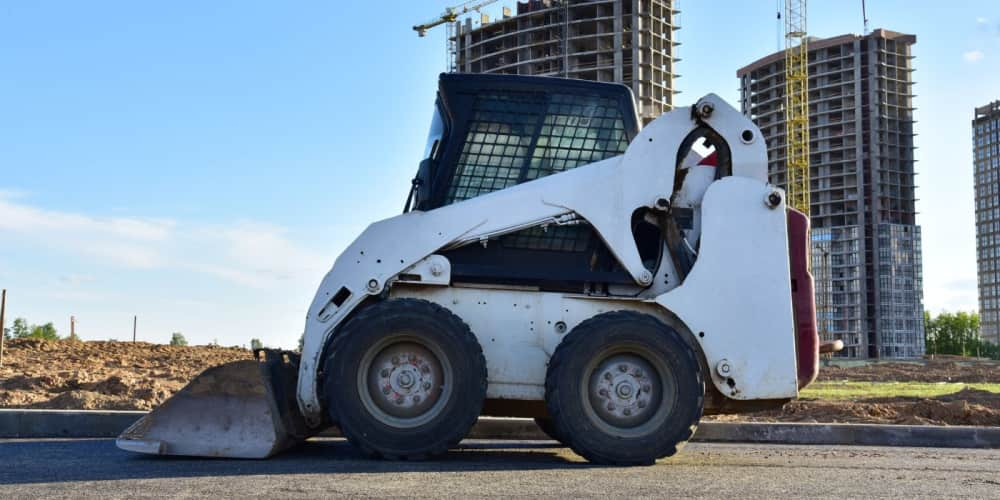Top 5 Skid Steer Maintenance Tips
Skid steers are one of the most popular pieces of heavy equipment in the industry. With their incredible versatility, they can lift, dig, move, drill, and more if equipped with the right attachments.
Capable of lifting well over 4,000 lbs on some of the larger models, skid steer loaders are multi-purpose and multi-terrain machines great for any contractor. It's because they're relied on so much that skid steer maintenance, repairs, and upkeep are vital to getting the most out of the machine.
We've put this list of the top five maintenance tips for skid steers, so you can avoid downtime and maximize your team's productivity.
Table of Contents
- Tip #1: Perform Daily Maintenance Checks
- Tip #2: Consistent Fluid Sampling
- Tip #3: Check Arms and Attachments
- Tip #4: Lean into Telematics
- Tip #5: Reducing Wear During Use
Tip #1: Perform Daily Maintenance Checks
Arguably the most important factor in keeping a skid steer in good condition is performing routine checks on a variety of features. For example, fluid levels and air filters should be consistently reevaluated. This includes hydraulic fluid, fuel, coolant, and engine oil. Operating any machine with less than the recommended amount of fluid could cause serious damage to the machine.
Check for leaks and look for poolings of fluid, especially in the engine compartment. Make sure the fuel and water separator bowl are in good condition, drain any water, and apply grease where necessary. Inspect the hoses on the machine to ensure they are not damaged or worn and are properly fastened in position, and verify all fluid compartments are sealed properly.
Next comes a complete inspection of the equipment by doing an equipment walkaround. Remove any debris from the equipment, particularly the engine compartment and around the tires. Check your tires for proper inflation, wear, and damage, and ensure your rims aren't dented or bent. Tire quality is vital for skid steers as deflated tires can diminish safety and performance, as well as make the machine unstable when executing a lift.
Tip #2: Consistent Fluid Sampling
Fluid sampling is helpful in identifying potential issues before they become major problems. A few industry best practices are: engine oil samples are collected every 250 operating hours, hydraulic and transmission fluid every 250-500 hours, and coolant should be tested annually. Routine sampling provides essential information on the condition of your skid steer and is a must for any contractor.
In addition to its practical benefits, fluid sampling can also provide value if you're seeking to trade in your machine. If maintenance records show a history of consistent checks, equipment suppliers can be sure your skid steer is in good health before agreeing to a deal.
Performing sampling provides necessary information and though it may seem like a pain, it will reduce the overall costs of ownership and operation in the long run.
Tip #3: Check Arms, Attachments, and Safety Features
Perhaps an underrated aspect of skid steer maintenance is inspecting the arms, hydraulics, and attachments of the machine. Ensuring the arms are functioning properly and that the pins and bushings are properly greased is important to daily performance.
If these joints are not functioning at their full capacity, the skid steer may have trouble lifting heavier loads. Checking attachments for debris and damage is also an easy way to minimize problems throughout the day.
Before you operate the skid steer, examine the seat belt, panel display, backup alerts, and horn. If any one of these is out of order, it could cause severe injury to yourself or the other workers on the job site. If you are a team leader, get your operators on board with performing these checks before they begin to drive.
Tip #4: Lean into Telematics
Basic telematics programs offer real-time machine readings and location data that can help you know when your skid steer needs maintenance. This technology provides in-depth results that monitor machine health, maintenance, and other valuable information. More advanced telematics will alert the owner, mechanic, and operator when there is a problem and can minimize downtime for maintenance and repairs.
Often used in larger machines, telematics can still be helpful to skid steer renters and owners. These systems provide valuable diagnostics early and can help you proactively in getting a mechanic to determine the best way to fix the machine.
Leaning into the use of telematics can save contractors maintenance costs and keep the skid steer in good condition.
Tip #5: Reducing Wear During Use
One of the best maintenance tips you can utilize is to reduce the need for maintenance in the first place. This may sound obvious, but there are several steps you can take to reduce the wear and damage your machine goes through on a daily basis. Each one will minimize costs simply by lessening the need for repair and service needs.
These operating best practices include:
- Not spinning the tires while digging
- Removing counterweights when they're not needed
- Using the filters and lubricants recommended by the manufacturer
- If you're expecting freezing temperatures during downtime or between shifts, run your skid steer forwards and then in reverse before shutting it down. This prevents fluid build-up which could freeze and cause damage.
- Using the minimum ground speed needed to get the job done
- Making turns without counter-rotating and avoiding 90-degree turns whenever possible, particularly on slopes
- If you must drive on a slope, take it on directly rather than diagonally
- Avoiding driving the machine on roads
Each of these skid steer repair and maintenance best practices will reduce maintenance costs and increase performance in the long run. Now, with all of these industry tips, all that's left is to choose the brand and specs you want, make your rental with DOZR, and get to work.

